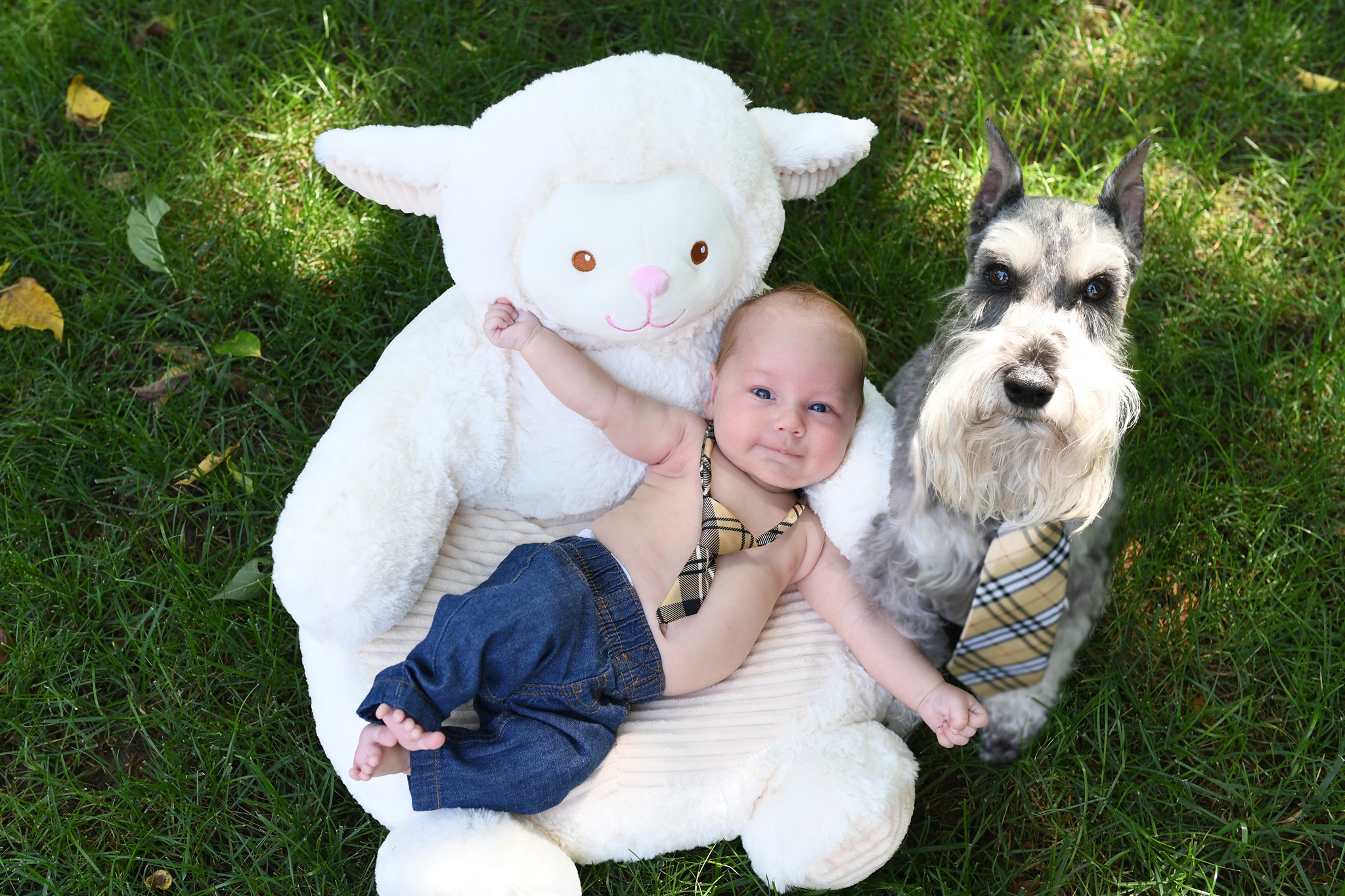Are you a new parent with 4-legged children already? To help educate others about child and pet safety, I spoke with Emily Coleman, Certified Professional Dog Trainer and owner of Canine Solutions. While there’s no scientific proof, many experts say dogs can sense when their owner is pregnant. Pets don’t understand a new baby will be joining the family in nine months, but they can notice differences in mood, posture, behavior and body chemistry. It’s common for dogs to either be more overprotective and on high alert or extremely clingy and we’ve seen this in the behavior of both of our dogs.
Preparing in Advance
I prepared well in advance for our baby’s arrival. Since our dogs were the center of our world, we wanted to ensure they were equally as prepared to help ease the transition. Emily explains that dogs, like babies, are very routine oriented and disruptions to their routine can cause stress. “One of the best things to do in advance is to bring in new baby gear as early as possible. Let your dog get used to the playpen, bassinet, stroller and other items before the baby arrives.”
Be sure to invest in a baby gate and an exercise pen to provide a barrier where necessary. It’s also important to give your dog a quiet place to sleep, since lack of sleep can have a negative effect on a dog’s behavior just as it can the parent’s.
Introducing Babies to Pets
When you bring a new baby home, your dog will face an overwhelming number of different sights, sounds and smells. Some of these may even be upsetting, especially if your pet hasn’t had opportunities to spend time with children before. Emily cautions to take your time with introductions.
Before your baby comes home, have someone bring your pet a blanket or item of clothing that smells like the baby. Greet your pet first upon arriving home. Once they calm down, let your pet smell the new baby and get acquainted. Slow introductions will allow your pup to see, interact with and adapt to the new arrival. Continue to reinforce basic obedience when the dog is in close proximity to the baby.
“Baby wearing” is a great way to keep your baby safe and still keep your hands free. When nursing or bottle feeding, have your partner give your pet treats so they associate feedings with positive reinforcement. Include your pet in baby-related activities such as changing a diaper and talk to both “babies” during the activity. This will help your pet view your baby as less of a stranger.
During the first few weeks, your pet may misbehave due to extra stimulation. Instead of scolding your pet, redirect them toward something that will make him happy, such as a new toy.
Addressing Warning Signs
While I’m guilty of thinking our dogs would never hurt anyone and aren’t capable of violence, I’m realistic. According to the CDC, more than 4.7 million dog-bite incidents occur in the United States every year. Of those attacks, 800,000 of these Americans will seek medical attention; half are children. “We’d all like to think that our dog would never bite and the reality is that there are so many factors that go into whether or not a dog might bite that it’s impossible to say anything like that with 100 percent guarantee,” notes Emily.
She advises if you leave a room, take the baby, take the dog, or take both. Effective supervision frequently means not allowing your dog unrestricted access to your child. “Children often inadvertently hurt dogs in their inquisitive explorations. Never allow your child to interact with the dog when he is eating, chewing a bone or sleeping.”
Knowing how to read your dog’s body language is crucial. Be aware of subtle gestures such as yawns, tongue flicks, lip licking and head turns, which can indicate anxiety. Enroll your dog in basic obedience training to maintain a certain amount of normalcy even when environmental variables change.
Teach your child to avoid dogs that are growling, baring their teeth, or whose fur is standing on end. Instruct your child never to stare into a dog’s eyes, which can antagonize it. Show your child how to stroke a pup’s back and sides, instead of reaching over their head.
Education and Resources
Many professional trainers provide in-home training that include topics such as how to prepare your dog for an impending arrival, teaching your dog to relinquish stolen items and to walk nicely beside the stroller.
Finally, Emily recommends The Other End of the Leash by Patricia McConnell, as it provides insight on why dogs behave the way they do and how their humans can better relate.
Read the original article featured in HERLIFE Magazine below.

leave a comment